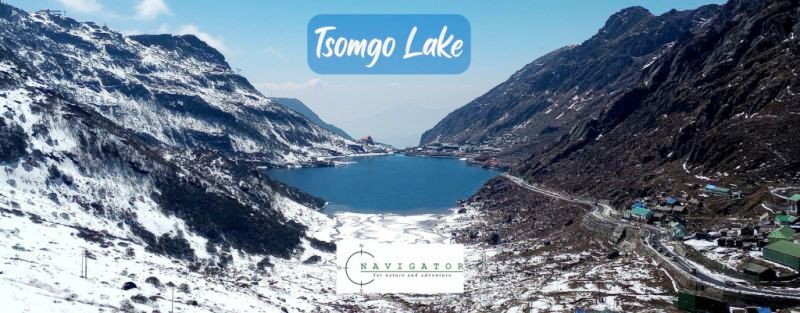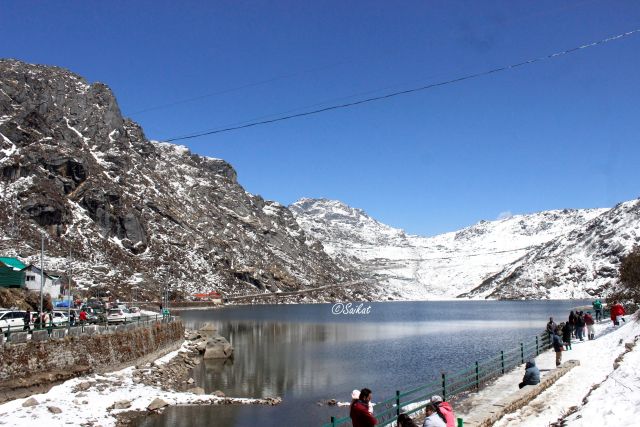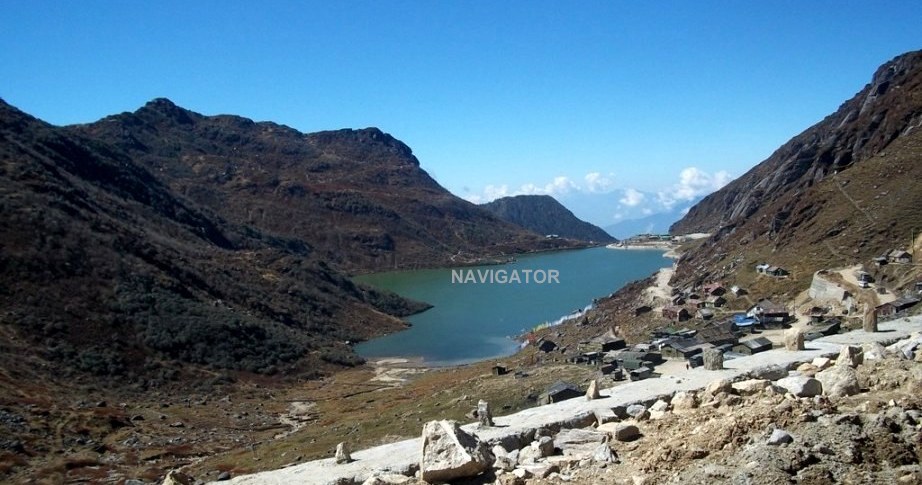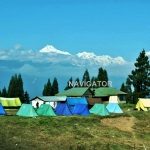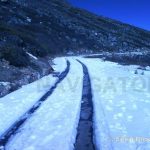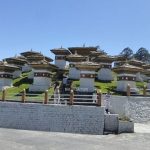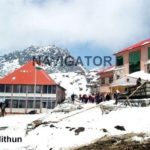If you’re planning a trip to Sikkim, make sure you add Tsomgo Lake (also called Changu Lake) to your list. Located just about 40 kilometers from Gangtok, this beautiful glacial lake offers a magical blend of natural beauty, culture, and a bit of adventure. With snow-covered mountains in the backdrop, calm waters, and crisp mountain air, Tsomgo Lake is a place that captures the hearts of every traveller.
The name “Tsomgo” comes from two words in the Bhutia language- “Tso” means lake & “Mgo” means the source. So, Tsomgo Lake means “source of the lake.” It’s a sacred place for the local people, especially the Sikkimese Bhutias and Lepchas. Many believe that the lake changes colors with the seasons and reflects the mood of nature.
Let’s dive into everything you need to know about Tsomgo Lake before you pack your bags!
Where is Tsomgo Lake?
Tsomgo Lake lies at an altitude of 12,313 feet (3,753 meters) above sea level. On the Gangtok-Nathula Highway, making it a perfect day trip from Sikkim’s capital, Gangtok. The road to the lake offers stunning views, twisting roads, and snow-covered scenery during winter.
What Makes Tsomgo Lake Special?
It’s a Glacial Lake
The Lake gets its water from melting snow of glacier & the surrounding mountains. Because of this, it stays cold throughout the year and freezes during winter. You can even walk on the frozen lake in peak winter (January to March) when it turns into a sheet of ice!
Color-Changing Waters
The lake’s water changes color with the seasons. In spring, it turns a deep blue surrounded by blooming rhododendrons. In winter, the entire area turns white with snow, making it look like a scene from a postcard.
Rich Flora and Fauna of Tsomgo Lake
The area around Tsomgo Lake is home to many rare plants and animals. In spring and summer, colorful flowers like primulas, blue poppies, and rhododendrons bloom in the region. You might also spot yaks, Himalayan monals & red pandas nearby.
Religious Importance
For locals, the lake is a sacred place. Lamas (Buddhist monks) used to study the lake’s color to predict the future. Even today, many Sikkimese people visit the lake to offer prayers and tie prayer flags along the edges for good luck.
Best Time to Visit Tsomgo Lake – A Season-by-Season Guide
Tsomgo Lake or Chhangu Lake, is one of the most beautiful spots in Sikkim. It changes its look with every season, and each visit feels special in its own way. But if you want the best experience, you need to know the right time to go.
Here’s a season-by-season guide to help you choose the perfect time to visit Tsomgo Lake, including average temperatures and travel tips.
Winter (December to February)
Temperature: Day: 2°C to 7°C | Night: -10°C to 0°C
Winter turns Tsomgo Lake into a white wonderland. The lake freezes completely, and snow covers the road, mountains, and trees. You can enjoy snowball fights, ride yaks in the snow, and take magical photos. Many people visit in winter just to see the frozen lake.
Travel Tip: Wear heavy winter jackets, gloves, boots, and woolen caps. Roads can get blocked by snow, so check weather updates before planning.
Summer (March to May)
Temperature: Day: 10°C to 15°C | Night: 3°C to 7°C
Summer is one of the good time to visit Tsomgo Lake. The snow starts melting, and the lake shows its deep blue colour. April is be the best time with flowers bloom along the hillsides, and the weather stays cool with snow around the lake. The roads also remain clear and safe. In May there will be increasing possibilities on rain & excess traffic might may your journey uncomfortable.
Travel Tip: Carry heavy woollen & windproof jacket for the mornings and evenings. Don’t forget sunglasses and sunscreen, as the sun feels strong at high altitude.
Monsoon (June to September)
Temperature: Day: 8°C to 13°C | Night: 5°C to 8°C
During the monsoon, the region receives heavy rainfall. Landslides and roadblocks are common in monsoon, which can make travel risky. Clouds often cover the lake, reducing visibility. Because of this, many tourists avoid visiting Tsomgo Lake in the monsoon.
Travel Tip: If you still want to go, keep buffer days in your plan. Carry rain gear and check the road status regularly.
Autumn (October to November)
Temperature: Day: 5°C to 12°C | Night: 0°C to 5°C
Autumn brings clear skies and fresh mountain air. The lake reflects the surrounding mountains beautifully, and the crowds remain smaller than in summer. November is the best time to visit Tsomgo Lake with the best possible view of surrounding hills & Mt. Kanchendzonga from the lake. It’s a great time to enjoy peaceful views and explore nearby places like Nathula Pass and Baba Mandir. If you are bird lover this is the time a no of migratory flock around the lake.
Travel Tip: Pack warm clothes as the nights start to get chilly. This season offers great photo opportunities, so keep your camera ready!
Final Thoughts – What’s the Best Time?
If you love snow and don’t mind the cold, visit in winter (December to February).
If you want clear views, flowers, and smooth travel, summer (March to April) is the best time.
Avoid monsoon (June to September) unless you’re an adventurous traveller.
Autumn (October to November) is also a great choice for peaceful travel, perfect weather & photography.
Avoid May if you want to avoid excess crowed & traffic jam.
November & April are the best time to visit to Tsomgo Lake with different flavours.
Tsomgo Lake looks beautiful in every season, but your experience depends on what you want to see and do. So choose the right time, pack the right clothes, and get ready for an unforgettable Himalayan adventure!
Things to Do at Tsomgo Lake
Yak and Mule Rides arround Tsomgo Lake
You can hop on a beautifully decorated yak or mule and go for a short ride around the lake. It’s a fun experience, especially for kids and first-time visitors. The handlers also offer photo sessions dressed in traditional attire.
Enjoy Local Food
Small stalls near the lake sell hot snacks and drinks. You can enjoy a bowl of thukpa (noodle soup) or momos (dumplings) while sipping butter tea or hot coffee. It’s the perfect way to warm up in the cold weather.
Take Stunning Photos
Whether it’s snow in winter or flowers in spring, the lake offers picture-perfect views throughout the year. Don’t forget to carry your camera or phone as every corner looks stunning.
Visit Baba Mandir and Nathula Pass
Tsomgo Lake lies on the way to two more popular spots – Baba Harbhajan Singh Mandir and Nathula Pass. You can combine all three in one day trip from Gangtok. Nathula Pass is on the Indo-China border and offers unforgettable mountain views.
Tsomgo Lake Cable Car – A Ride Above the Clouds
The Tsomgo Lake Cable Car is one of the newest and most exciting attractions near the lake. This thrilling ride offers visitors a bird’s-eye view of the stunning landscape around Tsomgo Lake. Opened recently for tourists, the cable car adds a whole new way to experience the beauty of the Eastern Himalayas. The ride takes you from the edge of the lake to a higher viewpoint, offering breathtaking views of the snow-covered mountains including Mt. Kanchendzonga, winding roads, and the sparkling blue waters of the lake below. The cable car ride is short but memorable, usually lasting about 5–7 minutes each way. So, if you’re visiting Tsomgo Lake, don’t miss this amazing ride. The Tsomgo Lake Cable Car adds a fun and scenic twist to your trip, giving you memories that will last a lifetime!
Travel Tips for Tourists
Get a Permit
Since Tsomgo Lake is near the international border, tourists need a special permit to visit. Don’t worry – we will arrange it for you. Just bring 2 passport-sized photos and a photo ID (like a passport or voter ID).
Dress in Layers
The weather around the lake changes quickly. Even in summer, mornings and evenings can feel cold. Wear warm jackets, gloves, woolen caps, and good shoes. In winter, snow boots help you walk easily on slippery paths.
Leave Early
Start your trip from Gangtok by 7:00 AM to avoid traffic and fog. The road closes by afternoon, so it’s better to return early.
Carry Essentials
Bring water, sunglasses, sunscreen, and light snacks. Mobile networks may not work properly near the lake, so inform your family before the trip.
Respect Local Culture
Tsomgo Lake is a sacred place for locals. Avoid littering, stay away from restricted areas, and don’t step into the water. Respect the traditions and keep the place clean.
How to Reach Tsomgo Lake
You can reach Tsomgo Lake only by road from Gangtok. The journey to Tsomgo Lake takes about 2 to 3 hours, depending on road conditions. There are serpentine roads offering worthy views on every twist and turn.
Why You Shouldn’t Miss Tsomgo Lake
Tsomgo Lake gives you a chance to experience the stunning beauty of the Himalayas. It’s more than just a sightseeing spot – it’s a place where nature, spirituality, and adventure come together. Whether you want to enjoy snow, take a yak ride, click amazing photos, or just sit quietly by the lake, Tsomgo has something for everyone.
A visit here will leave you with peaceful memories and a deep sense of connection with the mountains. So, if you’re heading to Sikkim, don’t miss this jewel hidden among the clouds!
Nearby attraction
Certainly! Here are 50-word articles for Baba Mandir, Nathula Pass, and Kupup Lake, written in simple and tourist-friendly language:
Baba Mandir
Baba Mandir 15 km away from Tsomgo Lake, honors soldier Harbhajan Singh, believed to protect the region even after his death. Located near Nathula Pass, this temple draws both tourists and soldiers. People come to pay respect and seek blessings. The shrine reflects devotion, bravery, and the deep connection between locals and the Indian Army.
Nathula Pass
Nathula Pass, on the Indo-China border, offers stunning mountain views and historic importance. Once part of the Silk Route, it now serves as a key border post. Visitors can see army camps, border gates, and sometimes Chinese soldiers across the fence. It’s a patriotic and unforgettable Sikkim experience.
Kupup Lake
Kupup Lake, shaped like an elephant, lies near the old Silk Route in East Sikkim. Surrounded by snowy peaks and colorful prayer flags, it remains peaceful and less crowded. A nearby army golf course and quiet village add to its charm, making it a perfect offbeat

